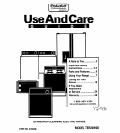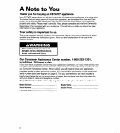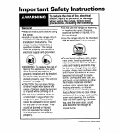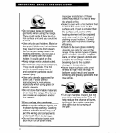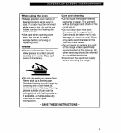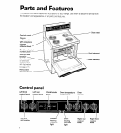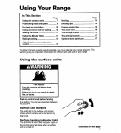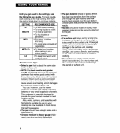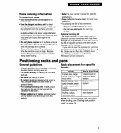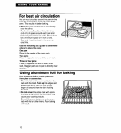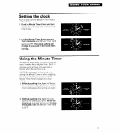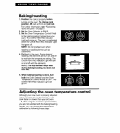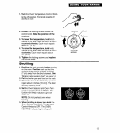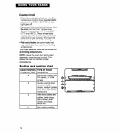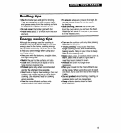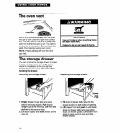
Until you get used to the settings, use
the following as a guide.
For best results,
start cooking at the high setting; then turn
the control knob down to continue cooking.
SElTING
HI
MED-HI
MED
RECOMMENDED USE
l To start foods cooking.
l To bring liquids to a boil.
l To hold
a
rapid boil.
l To fry chicken or
pancakes.
l For gravy, pudding
and icing.
l To cook large amounts of
veaetables.
Cookware tips
l
Select a pan
that is about the same size
as the surface unit.
l
NOTE: For best results and greater
energy efficiency,
use only flat-bottomed
cookware that makes good contact with
the surface units. Cookware with rounded,
warped, ribbed (such as some porcelain
enamelware) or dented bottoms could
cause severe overheating, which damages
the cookware and/or surface unit.
You can, however, use the newer
cookware available with slightly indented
bottoms or very small expansion channels.
This cookware is specially designed to
provide the good contact needed for best
cooking results.
Also, woks, canners, and teakettles with
flat bottoms suitable for use on your
cooktop are now available in most stores
that sell housewares.
l
The pan
should have straight sides and a
tight-fitting lid.
l
Choose medium
to
heavy gauge
(thick-
ness) pans that are fairly lightweight.
l
The pan material
(metal or glass) affects
how fast heat transfers from the surface
unit through the pan material and how
evenly heat spreads over the pan bottom.
Choose pans that provide the best cooking
results.
l
Handles
should be made of sturdy, heat-
resistant material and be securely attached
to the pan.
NOTES:
l
If a surface unit
stays red for a long time,
the bottom of the pan is not flat enough or
is too small for the surface unit. Prolonged
usage of incorrect utensils could result in
damage to the surface unit, cooktop,
wiring, and surrounding areas. To prevent
damage, use correct utensils, start cooking
on HI, and turn control down to continue
cooking.
l
Do not leave
an empty utensil, or one
which has boiled dry, on a hot surface unit.
The utensil could overheat and damage
the utensil or surface unit.
8



